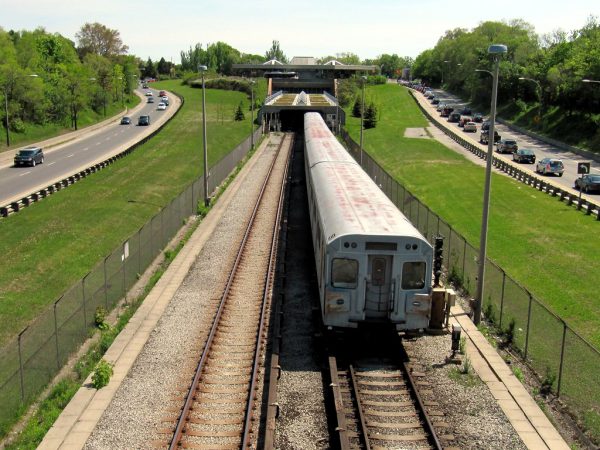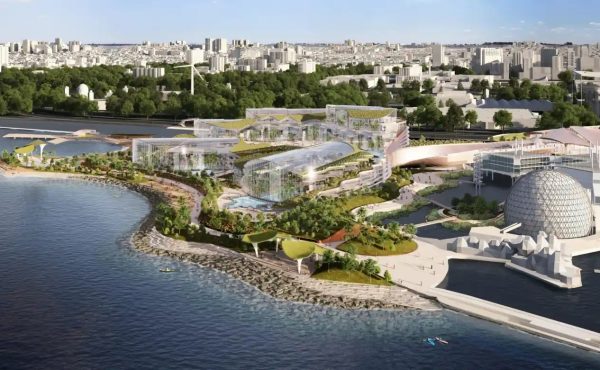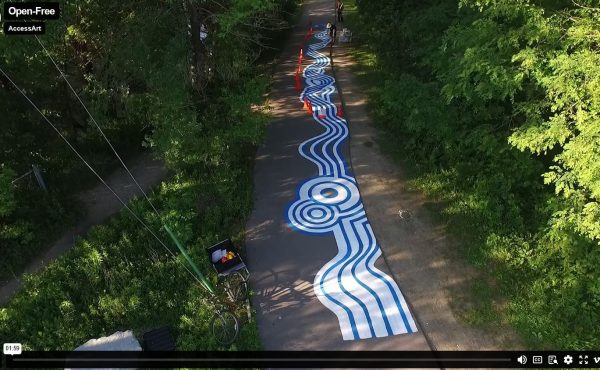André Darmanin is a recovered transit planner and currently writes on planning and policy issues on his blog — Metro Governance (metrogovernance.wordpress.com)
One of my early memories as a teenager growing up in Lawrence Heights, aka “The Jungle”, was during the mid-80s where early morning summers were spent on the tennis court. Joey (a white kid), Howie (a black kid), and I (a biracial kid) would wake up at 7:30 AM to play, hours before the summer sun would be at its peak and heat and humidity would hit. We would take turns playing between the courts at Bathurst Heights High School (now John Polanyi Collegiate) and Baycrest Park. Joey and Howie lived on the south end of the Jungle at Old Meadow Lane, and I lived on the north end on Leila Lane. The majority of times we played, it would be on the Bathurst Heights courts. Occasionally, I would try to gently nudge them into playing at Baycrest because it was closer to me, but most of the time to no avail. I never thought to ask why Joey and Howie preferred going to Bathurst Heights to play tennis, other than the convenience.
Having been out of the neighbourhood for over 20 years and now armed with urban policy and planning experience, I can now make strong assessments of where social and spatial factors of accessibility were concerned.
Lawrence Heights to this day is split by Allen Road and the subway. Unless kids and families went to the old Simpson’s Outlet (now Lawrence Square) or to Yorkdale, us kids rarely traversed outside of those blocks as a matter of comfort. This is still a common trait in similar communities.
While distance wasn’t a concern for any of us because we rode our bikes, we had “access” to transportation. With the sun beating down and the humidity setting in, less energy was consumed by riding to the courts that were the closest. In summary, accessibility is tied to safety, comfort, and proximity.
Accessibility is defined as the freedom to be mobile in reaching, entering, or obtaining services. There is a general public understanding that accessibility addresses the removal of structural barriers or enables free movement for people living with disabilities. Visible and tangible examples are ramps, braille on elevator panel buttons, and bus stop announcements.
However, accessibility has broader social dimensions and can be intangible. These issues become clearer when we consider the distinguishable differences between perceived and objective accessibility.
Perceived accessibility is defined by how people rate the conditions in which they live. Different individuals may perceive accessibility differently due to which travel opportunities are known to them or lie within their interest. Objective accessibility relies on place, transportation and time, and measurements that are often reduced to attributes such as travel times and distances to a specific set of destinations.
Contrary to objective accessibility, perceived accessibility consists of perceptions of the level of ease to access and use the built environment and transportation system, or access to activities of choice. Examples of perceived accessibility could be walking distance to the nearest transit stop or station or perceived safety when using the transit system.
When we factor in perceived accessibility, we can then consider the free movement of people of colour, women, LGBT2Q+ communities, and poor people within our public realm. In terms of transit and active transportation, for example, people of colour have diverse experiences in the way social spaces and networks exist in Lawrence Heights, Jane & Finch, Chester Le, or Alexandra Park. Perceived accessibility captures the subjective aspect of accessibility and complements objective approaches. Perceived accessibility may also include perceived information or personal preferences, attitudes and abilities.
The practical definition of accessibility must be based on how residents evaluate and perceive their surroundings and reflect the elements that are most important to them. As Joey, Howie, and I were growing up in a low-income neighbourhood, comfort, safety, equity, and use of public physical and creative social spaces would be common traits in defining accessibility.
Unfortunately, within the planning profession, there are unknowingly inherent biases relying entirely on objective measures such as open space standards or how many single-family homes developers can fit on a lot. Development planners design subdivisions with the car in mind and without consideration that transportation trips start with walking. The land use/transit connection fails miserably when planners think in silos. For example, if we were to consider perceived accessibility in some at-risk neighbourhoods, we would also need to think about how isolation from the street environment becomes a physical safety concern. Objective design approaches have created accessibility risks such as unsafe walking environments that for example create hidden spots where assaults can occur, especially at night. Disconnected bike paths affect our travel behaviour, through the physical and personal safety amenities and perceived isolation.
Along a walk different features such as appropriate lighting, bus stop or facility location and neighbourhood design would improve an experience. We also need design that supports physical accessibility such as accessible and safe paths between locations, legible signage, and proper functional elevators.
Minimizing perceived accessibility for all social groups will be key. Planners and policymakers should provide equal access through regulation. They need to be mindful of how citizens interact in public spaces. This includes deconstructing biases in planning, engineering, and urban design professions, including white privilege when designing services, subdivisions, or transit.
In the short, medium, and long-term, accessibility can be improved in the following ways:
- In the short term, change the dialogue on accessibility. While it is imperative to continue to centre individuals living with disabilities with even more physically accessible barrier-free design, there needs to be legislation focused on perceived accessibility in our social and physical spaces that address and improve physical and mental health, for example.
- Transportation accessibility should not only include tangible items, but also a need for increased service especially in hard to reach destinations. Transit planning decisions are currently based on departmental budget constraints and political decisions with some public input. Yet, service planning is concerned with coverage, especially in low demand areas, instead of frequency of service. With the opportunities of shared mobility solving the first and last mile conundrum, resources can now be allocated to providing increased frequencies.
- Make the planning process more accessible to those without resources. For example, in Jay Pitter’s conversation with respected Regent Park community leader Sandra Costain as outlined in her and John Lorinc’s book Subdivided, one solution was for municipal officials to make significant efforts to increase accessibility for community members who were without the institutional and educational power and knowledge to influence decision making: people of colour, communities whose first language is not English, and those without the financial resources who have a stake in community-building.
- In the medium term, start from the top and remove inherent biases especially with professional standards. The Codes of Ethics of the Canadian Institute of Planners and the various provincial institutes must have regard for social equity — a critical component of accessibility. Taking from the American Institute of Certified Planners Code of Ethics and Professional Conduct, it aspires to the principle of seeking “social justice by working to expand choice and opportunities for all persons, recognizing a special responsibility to plan for the needs of the disadvantaged and to promote racial and economic integration.” Applying this statement to provincial policies, city and regional official and community plans and institutions, future decisions can be made with subjective and objective accessibility components in mind.
- In the long term, with the evolution of automated vehicles (AV), accessibility will be more susceptible to change in the short term. AVs could potentially influence choices for individuals where it could capitalize with densification and elimination of parking structures or lots to build new firms and housing. In turn, this would increase the supply of housing and potentially provide increased affordable housing choices.
Past city and regional planning decisions had directly — and indirectly — influenced choices for teenagers like Joey, Howie, and me. They are still present in many of the low-income neighbourhoods in the Greater Toronto Area. Lawrence Heights is currently undergoing revitalization, similar to Regent Park. While recent results have been slightly more inclusive, and the jury will still be out on the revitalization, there is seemingly still a long way to go with the hopes that accessibility, more so, perceived accessibility, will be improved for public social spaces for all generations, genders, and abilities.
photo by Loozrboy




